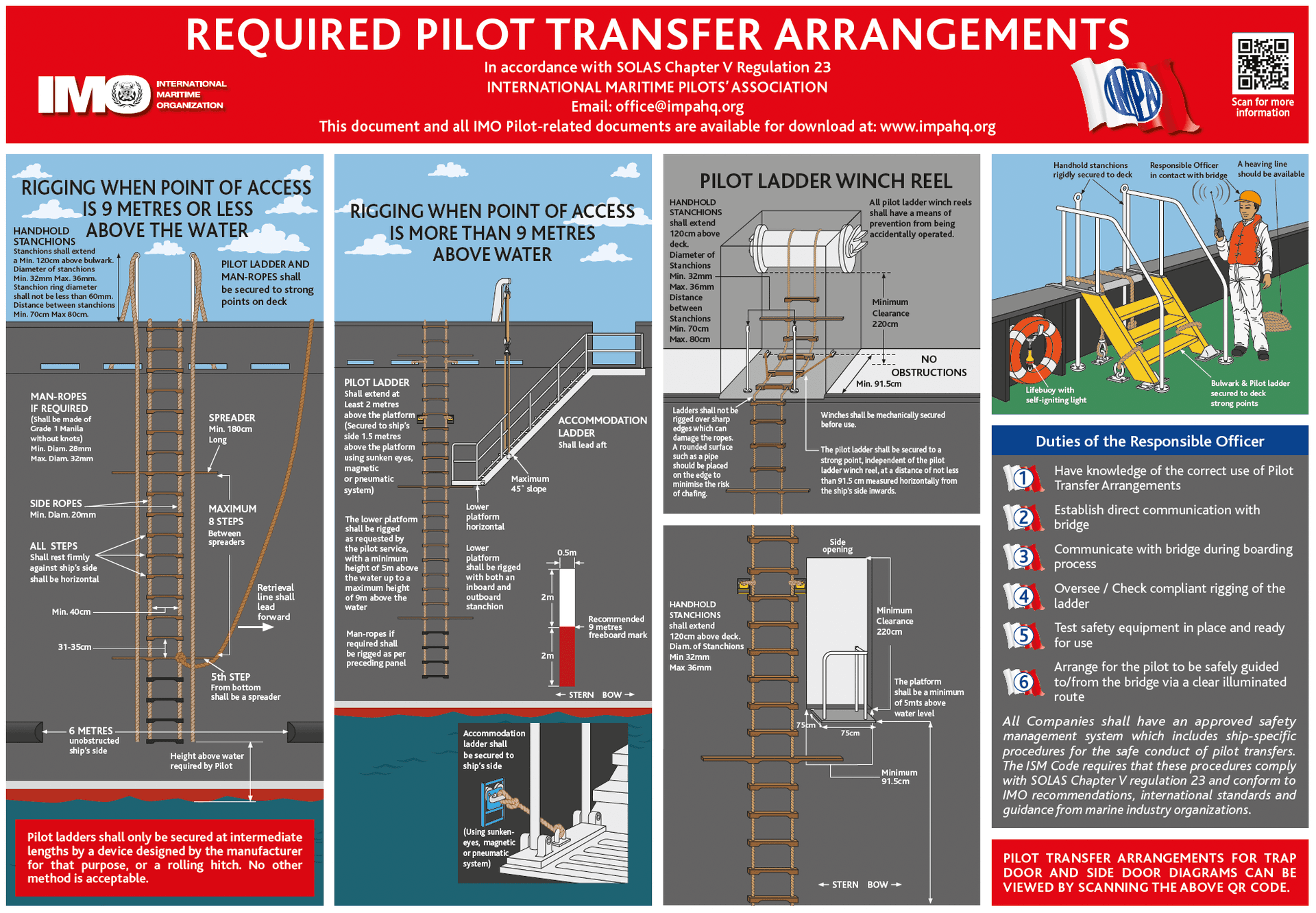Pilot Ladders: Latest IMO Regulations and the 2028 Amendments

The pilot ladder is one of the most critical pieces of safety equipment on board. Ensuring a pilot’s safe transfer is not only an operational requirement but a matter of life and safety. In recent years, incidents and deficiencies have prompted the IMO to revise its regulatory framework, specifically SOLAS Chapter V/23 and related guidelines [1].
Current FrameworkToday, compliance is based on three key pillars:
- SOLAS Chapter V, Regulation 23 – Mandatory pilot transfer arrangements [1]
- IMO Resolution A.1045(27) (2011) and A.1108(29) (2015) – Technical specifications for bulwark ladders, handholds, combination arrangements [2]
- ISO 799-1:2019 – Design and construction standard for pilot ladders [3]
This framework remains in force and forms the basis of inspections.
The 2025 UpdateOn 5 September 2025, IMO issued MSC.1/Circ.1428/Rev.1, which updated the well-known pilot transfer poster [4].
The revision provides clearer instructions and illustrations for:
- Combination arrangements
- Trapdoor transitions
- Step securing methods and spreaders
At NCSR 11 (June 2024) and MSC 110 (June 2025), IMO approved amendments to SOLAS V/23 and the associated performance standards [5]. These amendments will enter into force on 1 January 2028.
Key changes include:
- Full alignment with ISO 799 standards (design, manufacture, inspection, maintenance) [3,5]
- Stricter type-approval requirements – self-certification will be limited [5]
- Clearer rules for trapdoor and combination transfers – top-down access prohibited; side-entry mandatory [4,5]
- Updated poster and training material – Rev.1 poster becomes the visual reference [4]
OCIMF’s SIRE 2.0 programme places strong emphasis on deck safety, human factors, and compliance with equipment standards. Pilot ladders are specifically checked under pilotage and navigation operations.
Implementing the updated IMO guidance ahead of the mandatory 2028 deadline can have a positive impact on SIRE 2.0 inspections:
- Inspectors will view early compliance (e.g. ISO 799-1:2019 certified ladders, MSC.1/Circ.1428/Rev.1 poster onboard) as a best practice demonstration.
- Crew awareness of new rules (such as prohibition of top-down trapdoor access) reflects proactive safety culture.
- Companies that adopt these measures early are more likely to receive favourable observations and demonstrate commitment to going beyond compliance.
- Verify your pilot ladders carry valid ISO 799-1:2019 certificates [3]
- Update your Safety Management System (SMS) now to reflect the 2028 amendments [5]
- In procurement, insist on ladders with year of manufacture, serial number, and conformity declaration [3]
- Display the MSC.1/Circ.1428/Rev.1 poster onboard before inspections [4]
A pilot ladder can easily become the weakest link in the chain of maritime safety. IMO’s latest regulatory package aims to strengthen that link. At RMS Ship Repair, we continue to provide solutions that ensure compliance, safety, and operational efficiency — On Time, On Site, On Your Side.
References[1] IMO – SOLAS Chapter V, Regulation 23: Pilot Transfer Arrangements (as amended)
[2] IMO Resolution A.1045(27) (2011) & A.1108(29) (2015): Recommendations on Pilot Transfer Arrangements
[3] ISO 799-1:2019 – Ships and Marine Technology: Pilot Ladders – Part 1: Design and Manufacture
[4] IMO MSC.1/Circ.1428/Rev.1 (5 Sept 2025): Required Pilot Transfer Arrangements for Pilots and Other Personnel (updated poster)
[5] IMO NCSR 11 (June 2024) & MSC 110 (June 2025): Approved amendments to SOLAS V/23, entering into force on 1 January 2028

